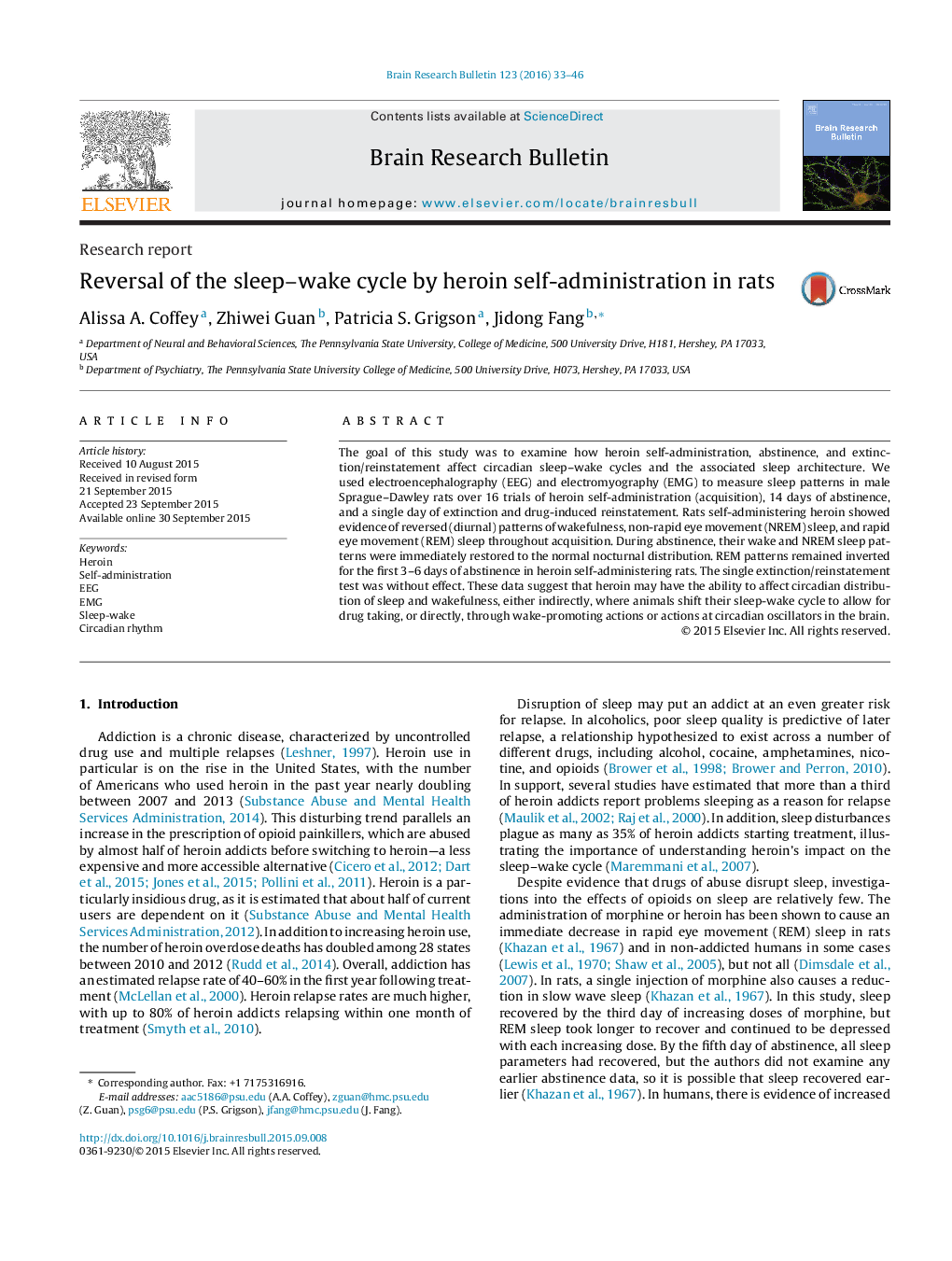| Article ID | Journal | Published Year | Pages | File Type |
|---|---|---|---|---|
| 4318612 | Brain Research Bulletin | 2016 | 14 Pages |
•Heroin self-administration during the light cycle reverses the rat sleep–wake cycle.•Reversal does not depend on the amount of drug taken.•Wake and NREM sleep patterns recover immediately in abstinence.•REM sleep patterns remain reversed into early abstinence (3–6 days).
The goal of this study was to examine how heroin self-administration, abstinence, and extinction/reinstatement affect circadian sleep–wake cycles and the associated sleep architecture. We used electroencephalography (EEG) and electromyography (EMG) to measure sleep patterns in male Sprague–Dawley rats over 16 trials of heroin self-administration (acquisition), 14 days of abstinence, and a single day of extinction and drug-induced reinstatement. Rats self-administering heroin showed evidence of reversed (diurnal) patterns of wakefulness, non-rapid eye movement (NREM) sleep, and rapid eye movement (REM) sleep throughout acquisition. During abstinence, their wake and NREM sleep patterns were immediately restored to the normal nocturnal distribution. REM patterns remained inverted for the first 3–6 days of abstinence in heroin self-administering rats. The single extinction/reinstatement test was without effect. These data suggest that heroin may have the ability to affect circadian distribution of sleep and wakefulness, either indirectly, where animals shift their sleep-wake cycle to allow for drug taking, or directly, through wake-promoting actions or actions at circadian oscillators in the brain.
